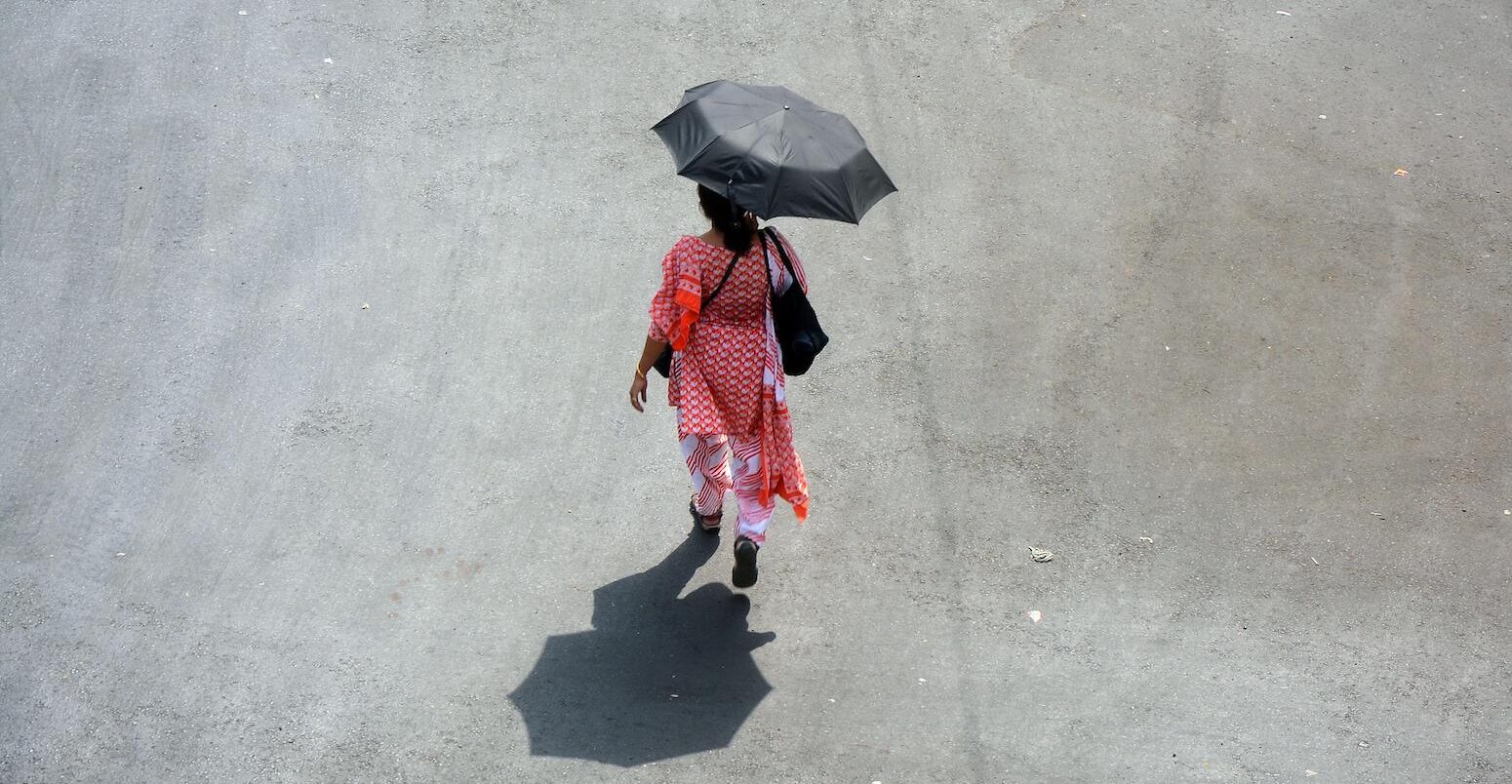
Guest post: The gaps in India’s ‘heat action plans’

Aditya Valiathan Pillai
03.28.23
Aditya Valiathan Pillai
28.03.2023 | 2:31pmThe spring months of February and March typically bring some of India’s best weather of the year.
Smoggy winter gives way to warm conditions that still retain a pleasant chill in the air, forming a buffer before the searing heat of summer.
But recent years have seen the summer heat arrive early, with heatwave alerts providing an unwelcome intrusion into the calm of spring.
Last year, for example, brought record-breaking temperatures in March. By the end of April, heatwaves had affected nearly three-quarters of the country’s landmass and ravaged the standing wheat crop.
The start of 2023 has been similarly alarming. Following a 2022 monsoon and winter perversely marked by sudden flooding in cities and drought-like conditions in rice-producing villages, India has just witnessed its hottest February in history.
Ominously, the Indian Meteorological Department has warned of the “enhanced probability of heatwaves” and above normal temperatures in the coming months.
The Indian government’s primary policy response to the life-threatening heat comes in the form of “heat action plans”. These set out measures for state, district and city government departments to prepare and respond to heatwaves.
In a new report, published this week, my coauthor and I carry out the first-ever critical review of heat action plans in India.
We find that heat plans have spread to several jurisdictions nationwide and they urge a healthy mix of different solution types – from infrastructure and nature-based solutions to behavioural adjustments. However, most plans do not account for local context, are underfunded and are poor at identifying and targeting vulnerable groups.
Planning for heat
The early heat of 2023 has shined a spotlight on India’s preparedness for extreme conditions.
The government seems to be tracking the threat. For example, India’s prime minister Narendra Modi chaired a heat preparedness meeting in March, a capstone to several heat reviews across the bureaucracy in recent weeks.
Heat action plans (HAPs) provide the primary safeguard between heatwaves and the loss of life and income (because it is too hot to work).
These plans are meant to guide heatwave preparation and emergency response across the government. They typically list standard procedures for individual departments – from public health to agriculture and electricity. They are necessarily broad in scope and ambitious because of the far-reaching and unpredictable consequences of heatwaves.
We analysed India’s HAPs to assess what they cover and what gaps remain. Our findings offer lessons to others developing and refining heat plans in the global south, where the challenges of extreme weather and state capacity are similar.
Our analysis covers 37 HAPs at the city (nine), district (13) and state (15) levels across 18 Indian states. We find that they all carry major gaps that will likely undermine their effectiveness.
For example, only two of the 37 plans include vulnerability assessments – maps that make it possible to locate and channel protective resources to those least able to cope.
Equally worryingly, only three of 37 plans identified funding for at least some of their measures. This is despite most HAPs recommending expensive changes to infrastructure, city plans and buildings.

More positively, the HAPs recommend an encouragingly varied palette of interventions (shown, grouped by type, in the figure below).
For example, nature-based solutions – actions to protect and restore ecosystems that help address societal challenges – feature prominently. In its recent synthesis report, the Intergovernmental Panel on Climate Change (IPCC) noted that these approaches have been effective at reducing urban heat risks.
Additionally, a healthy proportion of interventions are longer-term measures – shown by the darker shades in the figure below – that could reduce heat risks for two heat seasons or more. The Indian cross-section yields a toolkit for HAP designers to pick from in their local contexts.

Local context
India’s vulnerability to extreme heat could significantly change the country’s economic trajectory and health outcomes with a disproportionate impact on the poor.
For example, a recent paper suggests that India will bear nearly half of all labour losses incurred by the 10 countries that stand to lose the most productivity because of hot and humid conditions.
Around three-quarters of the Indian labour force (pdf) are employed in “heat-exposed” sectors that produce around half of the country’s GDP. These sectors can include those exclusively involving work outdoors – such as agriculture, mining and quarrying – as well as those in indoor settings with poor air-conditioning penetration – including manufacturing, hospitality and transport.

On the health front, the government’s own mortality figures (pdf) show that almost 26,000 lives were lost to heatwaves between 1990 and 2020, despite widely acknowledged challenges in accurately estimating mortality.
But these wider trends mask very different lived local realities of heat. A coastal town might have higher humidity, which could bring life threatening consequences at lower temperatures. A mining town in central India could have close to its entire population exposed and unable to work. A bustling city of tarmac, concrete and glass facades will create heat islands.
Heat plans are meant to study the nature and distribution of local heat, employment, vulnerable populations and built environments – among other things – to build accurate targeting mechanisms for the interventions it prescribes.
We find, however, that most plans fail to do this. They rarely consider humid heat, the possibility of hot nights – that prevents the body cooling down and increases death tolls – and the extent of built-up area, among other local characteristics.
By generally failing to conduct vulnerability assessments, these plans have a limited view of the social distribution of risk. And, crucially, none build climate projections into their planning, which limits understanding of when and where to make structural changes to India’s ever expanding and densifying cities and towns.
Funding, transparency and coverage
Worryingly, the 37 HAPs we reviewed also lacked appropriate financial backing. Despite pushing for an extensive list of short and longer-term measures, only 11 of 37 plans mentioned funding (see chart below), of which eight simply asked implementing government departments to find funding for them.

This exposes another frailty. None of the plans are notified under existing laws, which means they are less likely to be funded and complied with. With state governments still burdened with large debts after the Covid-19 pandemic, India’s HAPs will likely be unevenly implemented.
In a context where, as we show, there were no independent evaluations of these plans and insufficient public consultation, finance is unlikely to flow to these plans.
Yet, perhaps our most basic observation was that it was unclear how many plans were in existence.
Some estimates claim the existence of over 100 plans nationwide, but we were only able to locate 37 – many of which were not publicly available. For example, Delhi – with a population of more than 20 million and some of the hottest weather on earth – does not have a HAP.
Despite the encouraging spread of heat planning across subnational governments in the last decade – driven by exhortations and guidelines from the national government – there are still significant gaps in coverage.
Lessons for climate policy
Heat plans are relatively new public policy instruments and are, therefore, constantly evolving.
While several frailties listed here will be common to plans in other countries, two lessons of wider utility emerge from this analysis.
First, it is important for plans to be unambiguously focused on the local, lived realities of vulnerable populations to stand any chance of being effective. The hyper-localisation of any policy instrument is challenging, but many climate impacts will call for the state to extend itself in these ways.
The second relates to finance. Across the world, HAPs tend to be hard to fund because of how sprawling and ambitious they are.
Yet, this multi-sectoral scope could be an advantage. If designed correctly, interventions can be supported with existing sectoral schemes and programmes – for example, passive cooling could be built into state-funded low-cost housing programmes.
A systematic stocktake of such opportunities could help identify other schemes that could be used to help with planning and responding to heatwaves.
Pillai & Dalal (2023 ). How is India adapting to heatwaves?: An assessment of heat action plans with insights for transformative climate action. CPR report.





